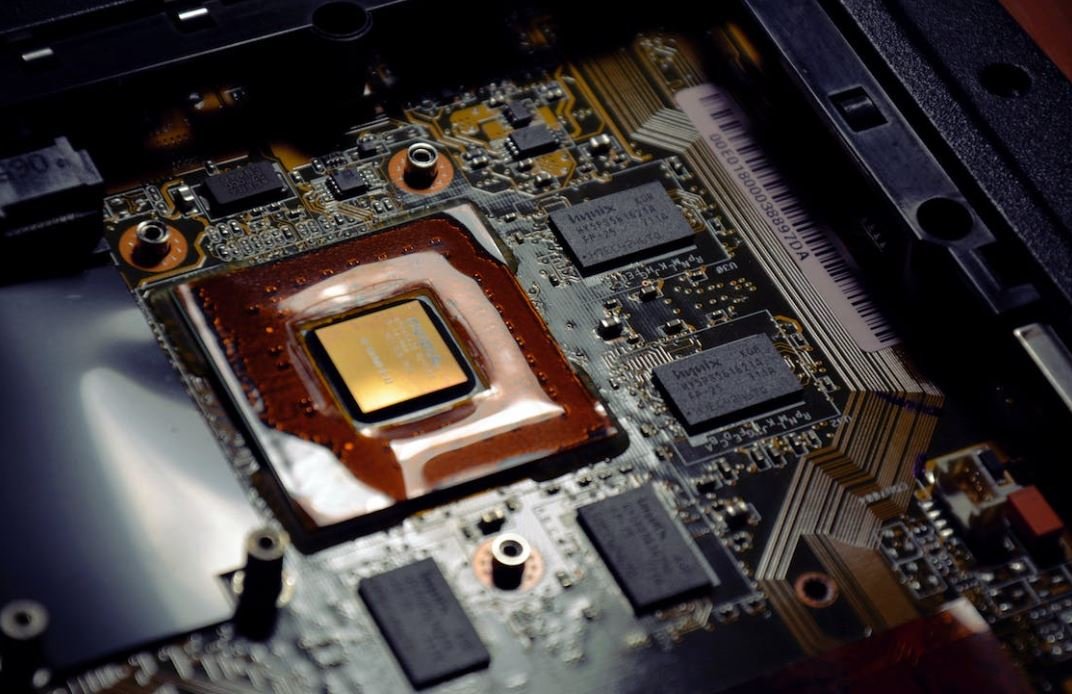Why SpaceX Is Important
SpaceX, founded by Elon Musk in 2002, has rapidly become a force to be reckoned with in the aerospace industry. With its ambitious goals and groundbreaking technology, SpaceX has revolutionized space travel and exploration. Let’s delve into why SpaceX is so important and the impact it has been making.
Key Takeaways
- SpaceX has significantly reduced the cost of space exploration through its reusable rocket technology.
- The company’s achievements have brought new possibilities for commercial space travel and colonization of other planets.
- SpaceX’s commitment to innovation has spurred competition and advancements in the aerospace industry.
**SpaceX has made tremendous strides in reducing the cost of space exploration**. By developing reusable rockets like the Falcon 9 and Falcon Heavy, SpaceX has made it possible to land and reuse the most expensive part of the rocket—the first stage. This breakthrough drastically cuts down the cost of launching payloads into space and opens up opportunities for more frequent and affordable space missions. *This pioneering approach has revolutionized the economics of space travel.*
Not only has SpaceX made space travel more cost-effective, but it has also expanded the realm of possibilities for **commercial space travel**. Through its Crew Dragon spacecraft, SpaceX has successfully transported astronauts to the International Space Station (ISS) in collaboration with NASA. This historic achievement signals the potential for a new era of commercial space tourism and paves the way for the colonization of other planets in the future. *Imagine the day when regular individuals can journey to space and maybe even live on Mars!*
Making a Mark in the Aerospace Industry
- SpaceX has disrupted the traditional space industry by challenging the status quo and pursuing ambitious goals.
- Elon Musk’s vision has inspired a new generation of engineers and entrepreneurs to push the boundaries of technological innovation.
- The company’s successes have triggered competition among other aerospace companies to innovate and develop reusable rocket technology.
**SpaceX’s impact goes far beyond space exploration**. The company’s achievements have inspired a renewed interest in space travel and have captured the public’s imagination. Elon Musk’s bold vision of establishing a self-sustaining colony on Mars has ignited passion among scientists, engineers, and future astronauts. *The ambitious plans of SpaceX are pushing the boundaries of what’s possible in the aerospace industry.*
SpaceX’s Achievements
| Milestone | Date |
|---|---|
| First privately funded liquid-propellant rocket to reach orbit (Falcon 1) | September 28, 2008 |
| First privately funded company to launch and recover a spacecraft (Dragon) | December 8, 2010 |
| First privately funded company to send a spacecraft (Dragon) to the ISS | May 25, 2012 |
SpaceX has not been shy about setting lofty goals and **pushing the boundaries of what is possible in space exploration**. The company has achieved several significant milestones, including being the first privately funded liquid-propellant rocket to reach orbit, launching and recovering a spacecraft, and sending a spacecraft to the ISS. *These accomplishments demonstrate SpaceX’s relentless pursuit of excellence and its capability to push the boundaries of human innovation.*
Future Missions
- SpaceX plans to establish a self-sustaining colony on Mars within the next few decades.
- The company is actively working on the development of the Super Heavy and Starship, which will enable long-duration voyages beyond Earth’s orbit.
- SpaceX aims to revolutionize global travel through its proposed point-to-point hypersonic rocket transportation system.
Looking ahead, SpaceX has incredibly ambitious plans for the future of space exploration. The company aims to **establish a self-sustaining colony on Mars** as a backup option for humanity and expand our horizons beyond Earth. Additionally, SpaceX is actively working on developing the Super Heavy and Starship, which will enable long-duration missions to the Moon, Mars, and other destinations in our solar system. *The dreams of interplanetary travel and colonization are slowly becoming a reality thanks to SpaceX’s relentless pursuit of innovation and technological advancement.*
Conclusion
SpaceX has revolutionized the aerospace industry, fundamentally changing the way we think about space travel and exploration. Through its groundbreaking technology, cost reduction initiatives, and ambitious goals, SpaceX has become a driving force for innovation in the field. Its achievements and vision have inspired a new wave of interest in space and have the potential to shape the future of humanity’s place in the universe.

Common Misconceptions
Misconception 1: SpaceX is just another aerospace company
Many people believe that SpaceX is just like any other aerospace company, but this is a common misconception. Here are three points to consider:
- SpaceX is more focused on reusable rockets and reducing the cost of space travel
- The company has achieved numerous milestones, such as successfully landing and reusing Falcon 9 rockets
- SpaceX aims to make life multi-planetary by establishing colonies on Mars
Misconception 2: SpaceX’s sole purpose is to compete with other space agencies
Some people mistakenly assume that SpaceX’s main objective is to compete with other space agencies around the world. However, the reality is quite different. Consider these points:
- SpaceX collaborates with NASA on various missions and resupplying the International Space Station (ISS)
- The company aims to develop the technology needed for interplanetary travel
- SpaceX envisions creating a sustainable human presence on other planets to ensure the survival of humanity
Misconception 3: SpaceX’s achievements are solely based on the efforts of Elon Musk
Another misconception is that SpaceX’s accomplishments can be attributed solely to the efforts of Elon Musk. However, this overlooks the contributions of many talented individuals. Consider these points:
- SpaceX employs over 8,000 employees as of 2021
- The company invests in research and development to constantly push the boundaries of space technology
- Elon Musk’s leadership and vision undoubtedly play a critical role, but SpaceX’s achievements are a team effort
Misconception 4: SpaceX is only focused on space exploration
Many people believe that SpaceX’s primary focus is space exploration, but there is more to the company than meets the eye. Consider the following:
- SpaceX also develops and operates satellite systems, such as the Starlink constellation for global internet coverage
- The company offers commercial space launch services to various customers, including private companies and government organizations
- Their technologies have the potential to revolutionize multiple industries, including telecommunications and internet connectivity
Misconception 5: SpaceX’s goals are far-fetched and unrealistic
Some individuals view SpaceX’s goals as unrealistic or far-fetched. However, let’s not dismiss their ambitions without considering the following points:
- SpaceX has already made significant advancements through reusable rocket technology, demonstrating its commitment to practical innovation
- The company continues to improve and iterate on its spacecraft with each launch
- SpaceX’s long-term vision focuses on colonizing Mars and ensuring the survival of the human species, which may seem ambitious, but it drives their relentless pursuit of technological advancements

SpaceX’s Successful Missions
SpaceX has completed numerous successful missions since its inception, demonstrating its growing influence in the field of space exploration. The table below highlights some of the key missions undertaken by SpaceX.
| Mission | Launch Date | Purpose | Achievement |
|---|---|---|---|
| CRS-20 | March 7, 2020 | Resupplying International Space Station (ISS) | Successful delivery of 5,500 pounds of supplies |
| Starlink 3-10 | November 24, 2021 | Deployment of Starlink satellites | Launch and deployment of 60 satellites |
| SAOCOM 1B | August 30, 2020 | Earth observation and radar imaging | Successful orbital insertion of SAOCOM 1B satellite |
| GPS III SV03 (Columbus) | June 30, 2020 | GPS satellite deployment | Successful launch and deployment of GPS III satellite |
SpaceX’s Starship Development Progress
Developing a fully reusable spacecraft has been a key goal of SpaceX. The table below provides an overview of the progress made in the Starship’s development.
| Starship Prototype | Last Major Update | Progress |
|---|---|---|
| SN10 | March 3, 2021 | Successful high-altitude flight and landing, but experienced a post-landing explosion |
| SN11 | March 30, 2021 | Partial success, reaching high altitudes before suffering an explosion during landing sequence |
| SN15 | May 5, 2021 | First Starship prototype to successfully complete a high-altitude flight and landing without major issues |
| SN20 (Upcoming) | – | Expected to be the first Starship prototype with orbital capabilities |
Commercial Crew Program Astronauts
SpaceX’s involvement in the Commercial Crew Program has enabled NASA to send astronauts to the International Space Station. The table below lists the astronauts who have flown aboard SpaceX’s Crew Dragon spacecraft.
| Astronaut Name | Mission | Launch Date |
|---|---|---|
| Robert Behnken | SpaceX Demo-2 | May 30, 2020 |
| Douglas Hurley | SpaceX Demo-2 | May 30, 2020 |
| Michael Hopkins | Crew-1 | November 15, 2020 |
| Victor Glover | Crew-1 | November 15, 2020 |
SpaceX’s Satellite Deployment
SpaceX’s Starlink constellation aims to provide global broadband coverage. The table below details the number of satellites deployed in different stages of the Starlink project.
| Stage | Functioning Satellites | Non-Functioning Satellites |
|---|---|---|
| Starlink v0.9 | 438 | – |
| Starlink 1.0 | 1,740 | – |
| Starlink 2.0 | 650 | – |
| Planned Deployment (2022) | 4,425 | 0 |
SpaceX’s Falcon Heavy Launches
The Falcon Heavy is the most powerful operational rocket in the world. The table below showcases some of the notable Falcon Heavy launches conducted by SpaceX.
| Mission | Launch Date | Payload |
|---|---|---|
| Arabsat-6A | April 11, 2019 | Communications satellite for Arabsat |
| STP-2 | June 25, 2019 | Multiple payloads for the U.S. Department of Defense |
| Starman (Test Flight) | February 6, 2018 | Tesla Roadster with Starman as the “driver” |
| Space Test Program-2 (STP-2) | June 25, 2019 | Multiple payloads including experiments and small satellites |
SpaceX’s Dragon Cargo Missions
SpaceX’s Dragon spacecraft has played a crucial role in resupplying the International Space Station. The table below highlights some of the Dragon cargo missions.
| Mission | Launch Date | Purpose |
|---|---|---|
| CRS-7 | June 28, 2015 | Resupply mission (failed during launch) |
| CRS-12 | August 14, 2017 | Resupplying International Space Station (ISS) |
| CRS-19 | December 5, 2019 | Resupplying International Space Station (ISS) |
| CRS-24 (Upcoming) | – | Planned resupply mission to the International Space Station (ISS) |
SpaceX’s Reusable Rockets
One of the notable achievements of SpaceX is its development of reusable rockets. The table below presents information about SpaceX‘s Falcon 9 booster landings.
| Flight Number | Date of Launch | Status of Booster |
|---|---|---|
| CRS-8 | April 4, 2016 | Landed Successfully |
| CRS-11 | June 3, 2017 | Landed Successfully |
| CRS-18 | July 25, 2019 | Landed Successfully |
| CRS-21 | December 6, 2020 | Landed Successfully |
SpaceX’s Lunar Mission: DearMoon
Under its DearMoon project, SpaceX plans to send a crewed Starship mission around the Moon. The table below introduces the passengers onboard the DearMoon mission.
| Passenger Name | Profession | Country |
|---|---|---|
| Yusaku Maezawa | Entrepreneur | Japan |
| Invitation Open | To be determined | – |
| Invitation Open | To be determined | – |
| Invitation Open | To be determined | – |
Payload Capacity of Falcon Heavy
The Falcon Heavy offers an impressive payload capacity to various orbits. The table below presents the payload capabilities of the Falcon Heavy.
| Destination | Max Payload | Reusable Capability |
|---|---|---|
| Low Earth Orbit (LEO) | 63,800 kg (140,700 lb) | Yes |
| Geostationary Transfer Orbit (GTO) | 26,700 kg (58,970 lb) | Yes |
| Mars | 16,800 kg (37,040 lb) | No |
| Pluto | 3,500 kg (7,720 lb) | No |
SpaceX revolutionizes space travel with groundbreaking achievements like the successful missions to resupply the ISS, the development of the Starship, and the establishment of the Starlink mega-constellation. Through their commitment to reusability and innovation, SpaceX has significantly lowered the cost of space exploration, opening up new possibilities for research, commercial ventures, and ultimately, the future of humanity beyond Earth.
Frequently Asked Questions
Why is SpaceX considered important for space exploration?
SpaceX is considered important for space exploration due to its innovative technologies, such as reusable rockets, which significantly reduce the cost of space missions. Additionally, SpaceX aims to colonize Mars and make humanity an interplanetary species.
What are the benefits of SpaceX’s reusable rockets?
The reusable rockets developed by SpaceX enable a significant reduction in the cost of space missions. This cost reduction can lead to increased frequency and accessibility of space launches, allowing for more scientific research, satellite deployments, and potential future manned missions.
How does SpaceX’s involvement in commercial spaceflight benefit the economy?
SpaceX’s involvement in commercial spaceflight generates economic benefits through job creation, technological advancements, and industry growth. It stimulates the development of new technologies and fosters competition, resulting in potential cost savings for satellite operators, telecommunications companies, and other space-related industries.
What are the main goals of SpaceX?
The main goals of SpaceX include reducing the cost of space travel, enabling the colonization of Mars, and advancing the knowledge and understanding of space exploration. SpaceX also aims to facilitate the reuse of rockets and create a sustainable infrastructure for space missions.
How has SpaceX impacted the space industry?
SpaceX has disrupted the space industry by introducing cost-effective solutions for space exploration. Their achievements, such as the first privately-funded spacecraft to reach orbit, have inspired other aerospace companies to innovate and aim for new milestones. SpaceX’s advancements have also challenged traditional industry norms and accelerated technological progress in the field.
What are the environmental benefits of SpaceX’s reusable rockets?
SpaceX’s reusable rockets contribute to environmental sustainability by reducing the amount of space debris generated during launches. The ability to recover and reuse rockets minimizes the need for the production of new rockets, which in turn reduces resource consumption and pollution associated with manufacturing.
How does SpaceX’s work on Mars colonization contribute to scientific knowledge?
SpaceX’s work on Mars colonization contributes to scientific knowledge by conducting research and development on human survival in space, long-duration space travel, and potential colonization techniques. This research could provide valuable insights and advancements applicable to both space exploration and life on Earth.
What is the significance of SpaceX’s collaboration with NASA?
SpaceX’s collaboration with NASA is significant as it helps accelerate the development of space technologies and expand the capabilities of human spaceflight. Through partnerships with NASA, SpaceX has been able to conduct resupply missions to the International Space Station (ISS) and contribute to the long-term goal of exploring and understanding the universe.
How does SpaceX’s involvement in satellite deployments impact communication and internet accessibility?
SpaceX’s involvement in satellite deployments aims to provide global high-speed internet coverage through the Starlink satellite constellation. This initiative holds the potential to bridge the digital divide, providing internet connectivity to remote regions and improving communication capabilities worldwide.
Does SpaceX have any competitors in the private space industry?
Yes, SpaceX has competitors in the private space industry, including companies like Blue Origin, Boeing, Lockheed Martin, and others. The competition fosters innovation, technological advancements, and cost-efficient space solutions, ultimately benefiting the industry as a whole.




